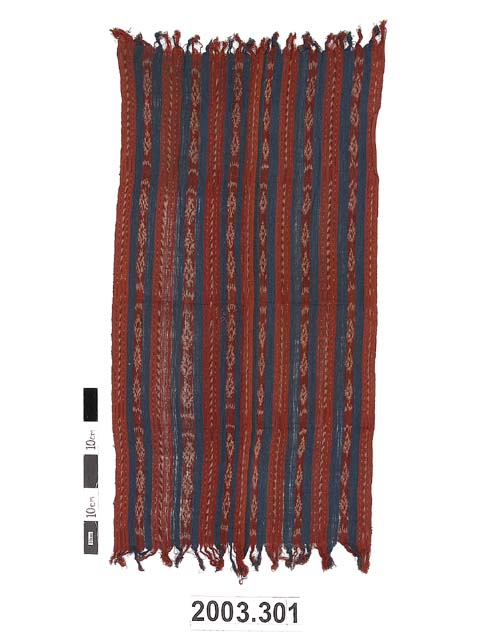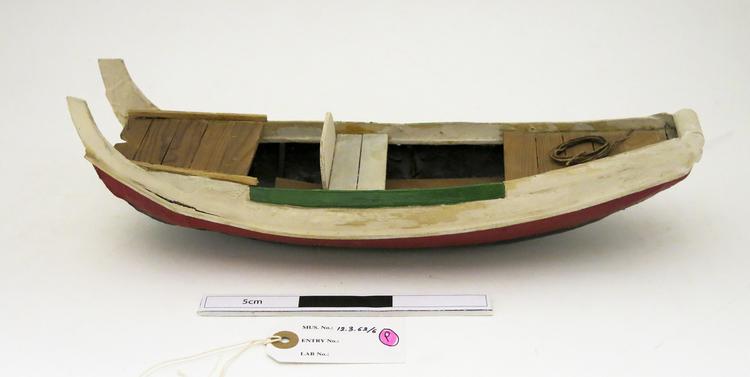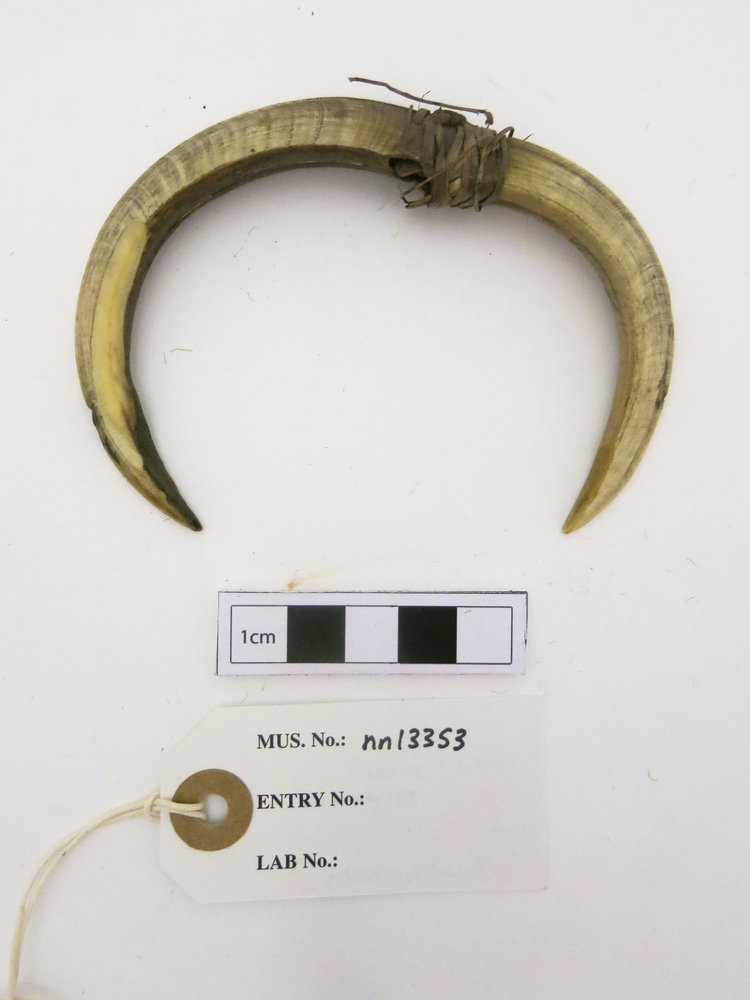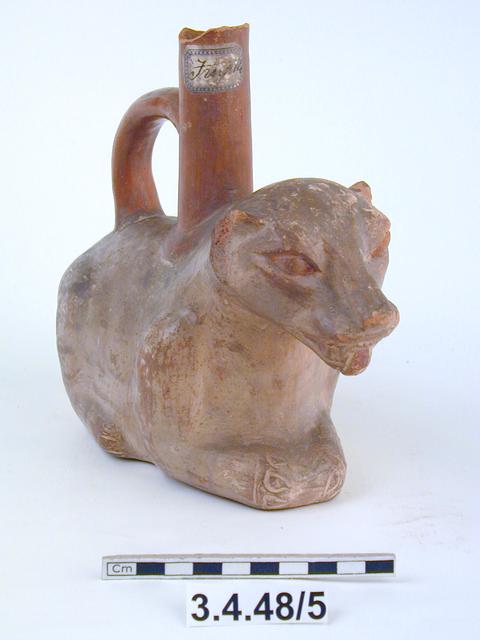
Rectangular cream barkcloth with painted decoration in black and brown. The textile narrows to both shorter ends. The decoration divides the tapa into 6 rectangular sections, each decorated with different patterns. The patterns consist of stripes, chevrons, reciprocal dentate bands or X-shaped motifs outlined in black and partially coloured in brown.
Barkcloth Kilt, Southern Papua New Guinea. Worn by a man as a kilt or short sarong, this piece of barkcloth is thicker and more fibrous than many pieces from elsewhere in New Guinea or the wider Pacific. It is nevertheless an interesting example of the way that this felted kind of cloth (almost a paper) can be made using the bark of plants other than the Paper Mulberry tree which is used throughout much of Oceania. Like the bark-fibre string used for netting bags throughout New Guinea, it is likely that this cloth was formed from a coarse-barked species of Ficus tree. The result is not so perfect as the renowned Maisin cloths of the north coast, but its design is bold, appealing and improvisational. Here, the surface is hand-painted in a design that recalls the weave of a plaited basket, without being so constrained. This object was collected in southern Papua New Guinea by the Cooke-Daniels Ethnographic Expedition, one of the first anthropological expeditions organised to document the cultures of what was then called British New Guinea. It was presented to the Horniman by the anthropologist Charles Seligman, who went on the expedition with Major Cooke-Daniels. Bark, pigment. Early 20th Century. Collected on the Cooke-Daniels Ethnographic Expedition in 1906.


































































































































































































































































































































































































































































































































